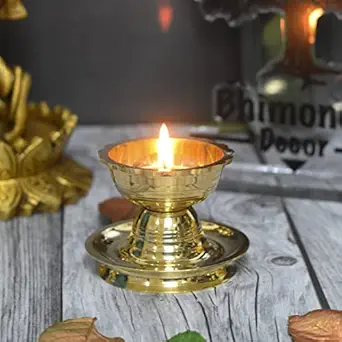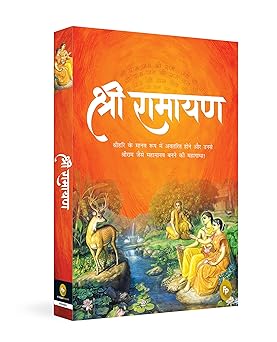કુંભ ઘડુલો ભરી લાવે મારો સાયબો
શંકર જલ થી નાહ્ય
હે મારો ભોળિયો જલ થી નાહ્ય…
હાલો મારી સૈયરો હાલો મારી બેનડીયો
ગણેશ વધાવા જઈએ
હે ઉમિયાજી ના વાલો અંગેથી ઉતર્યા
ગૌરી નંદ ગણેશ હો
હાલો મારી સૈયરો હાલો મારી બેનડીયો
ગણેશ વધાવા જઈએ
હે રીધ્ધી સીધ્ધી ના દાતા છો સ્વામી
પલમાં ભાંગો ભીડ હો
હાલો મારી સૈયરો હાલો મારી બેનડીયો
ગણેશ વધાવા જઈએ
હે મોદક લાડુ બાપા તમને ચઢતા
મુષક સવારી હોય હો
હાલો મારી સૈયરો હાલો મારી બેનડીયો
ગણેશ વધાવા જઈએ
Overview of “Kumbh Ghadulo Bhari Lave”
Title & Meaning
'Kumbh Ghadulo Bhari Lave' translates to 'The pitcher fills with water.' This traditional Gujarati Garba song metaphorically portrays the journey of devotion and the fulfillment of spiritual desires.
Artist & Recording Details
The song has been performed by various artists, including Bhavna Panchal and Vikram Thakor. It is featured in the album 'Lok Garba Non Stop' by Rushabh Ahir.
Genre & Occasion
This Garba falls under the devotional genre, specifically Bhakti Garba, and is commonly performed during the Navratri festival in Gujarat.
Language & Dialect
The lyrics are in Gujarati, utilizing regional dialects and expressions to connect with the local audience during festive occasions.
Popularity & Versions
The Garba is popular in Gujarat during Navratri and has been performed by various artists. Specific versions or renditions are not detailed on the provided page.
Lyrics Structure & Themes
Devotional Invocation
The song begins with an invocation to the divine, seeking blessings and expressing reverence, setting the tone for the devotional journey.
Metaphorical Imagery
The lyrics employ metaphors, such as the pitcher filling with water, to symbolize the accumulation of spiritual merit and the fulfillment of desires.
Repetition & Chorus
The repetitive nature of the lyrics, especially the chorus, encourages audience participation and enhances the festive atmosphere.
Community Engagement
The song's lively rhythm and engaging lyrics foster a sense of community and collective celebration during performances.
Spiritual Fulfillment
As the song progresses, it emphasizes the journey towards spiritual fulfillment and the joy derived from divine blessings.
Musical & Performance Elements
Instrumentation & Rhythm
Traditional instruments like dhol, tabla, and manjira accompany the Garba, providing a rhythmic foundation that complements the dance movements.
Tempo Variation & Dynamics
The song features dynamic tempo changes, with slower verses building up to faster, energetic choruses, aligning with the dance's rhythm.
Live vs Studio Versions
Live performances often include audience interaction and improvisation, while studio versions are more polished and consistent.
Dance Cues & Movements
The Garba's choreography includes traditional steps like clapping, spinning, and footwork that correspond to the lyrics and rhythm.
Audience Participation
The repetitive chorus and rhythmic beats invite audience participation, fostering a communal and immersive experience.
Festival & Cultural Significance
Navratri Significance
Performed during the nine nights of Navratri, this Garba honors the Goddess and is a central part of the festival's cultural celebrations.
Community Identity & Bonding
The communal aspect of Garba strengthens social bonds and reinforces cultural identity among participants.
Preserving Folk Tradition
Through its performance, the Garba helps preserve and transmit traditional Gujarati folk music and dance to newer generations.
Emotional & Spiritual Uplift
The song's lively rhythm and engaging lyrics uplift the spirit, fostering a sense of connection with the divine.
How to Use & Share
Translations & Transliteration
Providing translations and transliterations makes the Garba accessible to a wider audience, including non-Gujarati speakers.
Audio / Video Embeds
Embedding audio or video versions allows users to experience the Garba directly on the website, enhancing engagement.
Printable Lyrics & PDFs
Offering downloadable lyrics in PDF format enables devotees to follow along during performances or practice sessions.
Performance Tips for Garba Nights
Providing tips on choreography, tempo changes, and audience interaction can enhance the overall performance experience.
SEO & Sharing Enhancements
Optimizing the page with relevant keywords, meta tags, and social media sharing options can improve visibility and user engagement.
'Kumbh Ghadulo Bhari Lave' translates to 'The pitcher fills with water.' This traditional Gujarati Garba song metaphorically portrays the journey of devotion and the fulfillment of spiritual desires.
The song has been performed by various artists, including Bhavna Panchal and Vikram Thakor. It is featured in the album 'Lok Garba Non Stop' by Rushabh Ahir.
This Garba falls under the devotional genre, specifically Bhakti Garba, and is commonly performed during the Navratri festival in Gujarat.
The lyrics are in Gujarati, utilizing regional dialects and expressions to connect with the local audience during festive occasions.
The Garba is popular in Gujarat during Navratri and has been performed by various artists. Specific versions or renditions are not detailed on the provided page.
The song begins with an invocation to the divine, seeking blessings and expressing reverence, setting the tone for the devotional journey.
The lyrics employ metaphors, such as the pitcher filling with water, to symbolize the accumulation of spiritual merit and the fulfillment of desires.
The repetitive nature of the lyrics, especially the chorus, encourages audience participation and enhances the festive atmosphere.
The song's lively rhythm and engaging lyrics foster a sense of community and collective celebration during performances.
As the song progresses, it emphasizes the journey towards spiritual fulfillment and the joy derived from divine blessings.
Traditional instruments like dhol, tabla, and manjira accompany the Garba, providing a rhythmic foundation that complements the dance movements.
The song features dynamic tempo changes, with slower verses building up to faster, energetic choruses, aligning with the dance's rhythm.
Live performances often include audience interaction and improvisation, while studio versions are more polished and consistent.
The Garba's choreography includes traditional steps like clapping, spinning, and footwork that correspond to the lyrics and rhythm.
The repetitive chorus and rhythmic beats invite audience participation, fostering a communal and immersive experience.
Performed during the nine nights of Navratri, this Garba honors the Goddess and is a central part of the festival's cultural celebrations.
The communal aspect of Garba strengthens social bonds and reinforces cultural identity among participants.
Through its performance, the Garba helps preserve and transmit traditional Gujarati folk music and dance to newer generations.
The song's lively rhythm and engaging lyrics uplift the spirit, fostering a sense of connection with the divine.
Providing translations and transliterations makes the Garba accessible to a wider audience, including non-Gujarati speakers.
Embedding audio or video versions allows users to experience the Garba directly on the website, enhancing engagement.
Offering downloadable lyrics in PDF format enables devotees to follow along during performances or practice sessions.
Providing tips on choreography, tempo changes, and audience interaction can enhance the overall performance experience.
Optimizing the page with relevant keywords, meta tags, and social media sharing options can improve visibility and user engagement.


